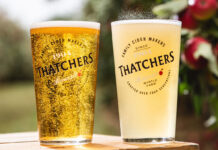A modern seafood offer should consider the environment, say firms

SUSTAINABILITY is an issue which has become increasingly important across the trade – and is especially pertinent when it comes to Scottish seafood.
As well as proving to be perennially popular with customers both at home and overseas, it’s also a hugely important industry for Scotland’s economy; recent figures reveal that the seafood-processing sector employed 7500 people in 2015, contributed £1.56 million in turnover and contributed £304m to the Scottish Government’s purse.
And it can prove to be a lucrative avenue for savvy operators, too.
Adrian Greaves of Young’s Foodservice told SLTN that seafood which has been sustainably sourced can help to create a good impression with consumers.
“Sustainably-sourced produce always reflects positively from a customer point of view and is important for operators to consider,” said Greaves.
“With regard to seafood, customers expect this to be sourced in a responsible and sustainable way.”
Taking a similar stance, Jason Calcutt, business development chef at fishmonger M&J Seafood, said: “Thanks to the internet and social media, consumers are more aware than ever of international cuisine as well as the issues surrounding sustainability and health.
“Indeed, the latter is one of the main reasons why more and more consumers are eating fish both in and out of home.
“From traditional sushi to Peruvian ceviche and Hawaiian poke, seafood is emerging as the cool, healthy alternative for cosmopolitan consumers.”
Despite the “staggering” selection of seafood available, Calcutt acknowledged that “we do still need to pull away a little from the big sellers that we rely on so much, such as salmon, cod, haddock, sea bass, prawns and squid”.
And operators need to lead this charge, reckons Calcutt.
He said: “There is so much more fish and seafood in and around the UK that we need to explore and get creative with.
“To that end, more certainly needs to be done in terms of raising awareness of what these options are – and how they’re incorporated onto menus.”
This also involves working with the right seafood suppliers, according to Greaves of Young’s Foodservice.
He said produce which has been sourced sustainably “improves the overall quality and allows operators to confidently relay this information to their customers”.
Admitting that sustainably-sourced British fish “might not always be the cheapest option”, Calcutt of M&J Seafood reckons that “given the current trend towards premiumisation, we know that consumers will pay more for something if it is of superior quality and ticks all the right boxes in terms of sustainability and provenance”.
Additionally, while locally-sourced fish such as lemon sole and lobsters may cost more, they “can be used in conjunction with cheaper alternatives” like megrim, plaice, gurnard, coley, hake and pollack, to create “a more cost effective dish”, said Calcutt.
As well as attracting custom with a sensibly-sourced menu, savvy operators would do well to make the most of the seafood they purchase, according to Calcutt, who said “nose to tail eating is everywhere now”.
“Sometimes the profit in fish can be found by using the bones to create a rich broth, the shells for a bisque and the skins to make crisps,” said Calcutt.
“The trimmings can even be used as ingredients for fishcakes or trendy dumplings.”
Echoing this view, Greaves of Young’s said dishes such as fishcakes “are a timeless favourite”, as well as a “versatile choice to include on menus”.
“Available in various different varieties and flavours, fishcakes provide an alternative to traditional fish menu options,” said Greaves.
“They also appeal to a wide market and can be easily adapted depending on how simple or adventurous the operator chooses to be.”
Calcutt of M&J Seafood agreed, stating that the use of fish “doesn’t have to be just as a centrepiece item”.
“Strongly flavoured varieties such as herrings, sprats and mackerel make a great filling for a soft taco or wrap where a small amount goes a long way; while the cheaper brown meat from crabs makes a great sauce when blitzed with mayo, tomato and herbs and added to a seafood risotto or pasta,” he said.
[box style=”0″]
Could Brexit affect Scots seafood?
THE Scottish Government recently released a report which revealed around 58% of employees at Scottish seafood processing units are from the non-UK European Economic Arena.
All 18 Scottish processors included in the study said they were dependent on lower skilled non-UK EEA workers, which has raised “potential labour impacts from the UK exit from the EU”, said the report.
A spokesman for the Scottish Seafood Association told SLTN that the industry “is sending a red alert now that there is a skill shortage both at sea and onshore in the seafood sector”.
“We urge government to heed our warning and engage with us to find solutions,” he said.
[/box]

























